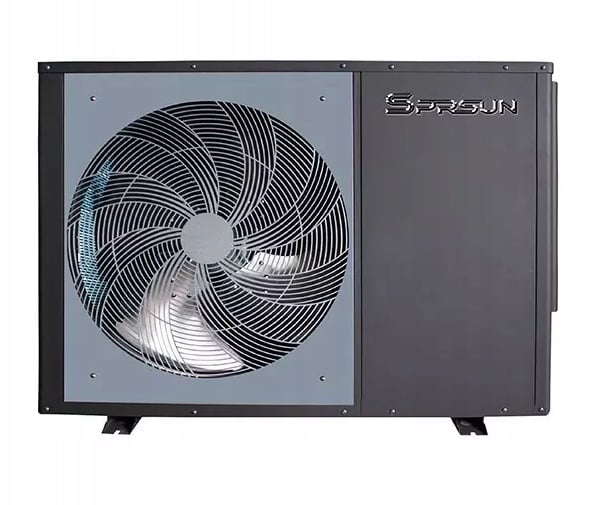What is a Monoblock Heat Pump?
Choosing Between Split and Monobloc Air-to-Water Heat Pumps: Which Is Suitable for Your Project?
In the constantly evolving world of sustainable energy solutions, selecting the ideal air-to-water heat pump can be a daunting task. Among the numerous factors to consider, the choice between split and monobloc heat pumps is of great significance. This distinction becomes increasingly relevant, especially as the demand for eco-friendly heating options continues to rise. Let's delve into the complexities of these two categories of heat pumps and explore the merits of each.
Understanding the Basics
To start, the terms 'split' and 'monobloc' refer to the type of heating system itself.
Monobloc Heat Pumps
A monobloc heat pump operates similarly to a traditional boiler and is characterized by a 'single-block' design. In this configuration, all essential components, except the hot water cylinder (typically placed indoors), are housed in a single unit outside the property. An excellent example of a monobloc system is the Midea 4 Mono.
What sets monobloc systems apart from their split counterparts is that all elements of the refrigeration cycle are located in the outdoor unit. The installation process mainly involves water connections, with a wiring center either indoors or within the outdoor unit for connecting wiring components such as pumps, ensuring a relatively straightforward installation.
A notable advantage of monobloc heat pumps is that they do not require involvement of personnel with F-Gas qualifications due to their minimal reliance on refrigerants. This makes monobloc heat pumps attractive to heating installers looking to venture into the realm of renewable solutions. By participating in relevant heat pump training programs and partnering with an informed distributor like Freedom HP, installers can embark on their installation journeys for renewable energy.
Benefits of Monobloc Heat Pumps:
- Easy Installation
- All-in-One Design
- Simplified Maintenance
Split Heat Pumps
In contrast, split heat pumps consist of both an outdoor unit with the heat exchanger and refrigerant and an indoor unit with circulation pumps, heat exchangers, and other essential components. In some cases, this indoor unit also integrates the hot water cylinder. Innovative models like the Hitachi Yutaki S-Combi combine these components into a single streamlined unit.
Benefits of Split Heat Pumps:
- Can be installed at a greater distance from the property (up to 75 meters)
- Eliminate the need for glycol or antifreeze
- Smaller footprint and quieter operation
Choosing the Right Solution for Your Project
Determining the ideal heat pump configuration depends on the specific requirements of your project. In most residential environments, a monobloc heat pump is sufficient, offering easy installation and efficient performance. Split systems, on the other hand, come into play for more intricate installations that require greater installation flexibility, as they can be placed up to 75 meters from the property.
With the emerging revolution in home heating driven by heat pumps, there has never been a more fitting time to join the movement.
Contact us at [email protected] to initiate a discussion about your project. Discover how New-Heating can provide the support and guidance you need to start your journey into renewable energy.






